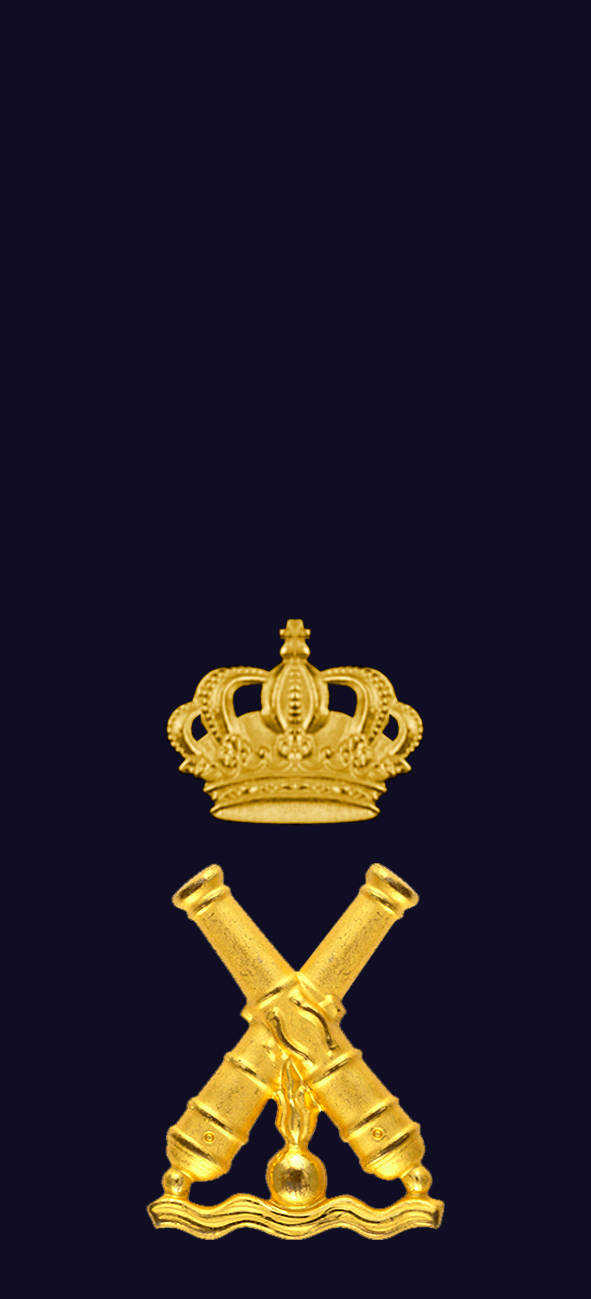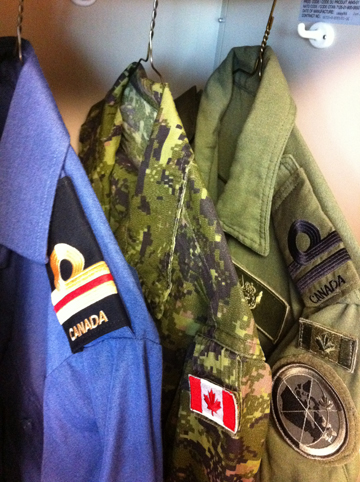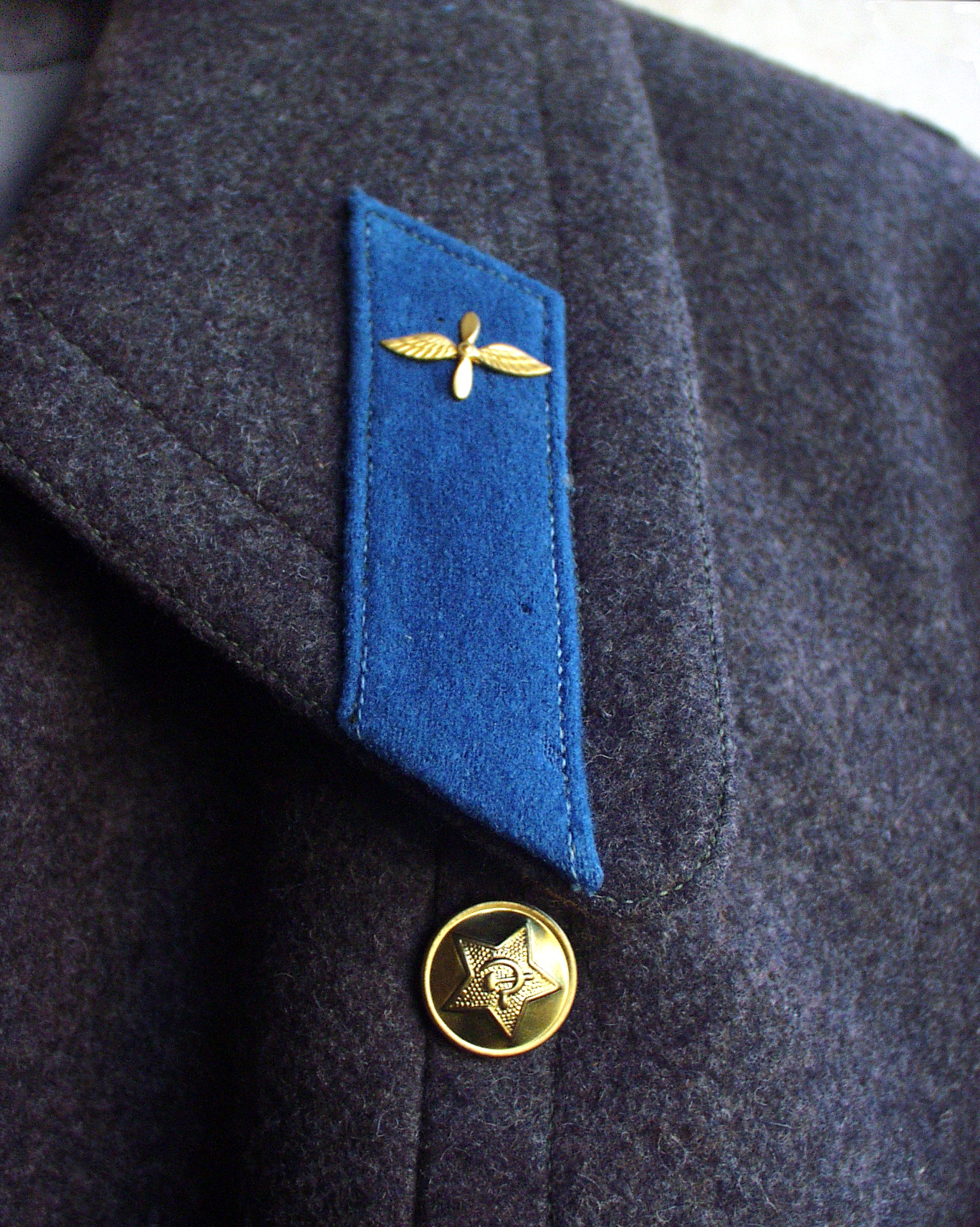|
överstelöjtnant
Lieutenant colonel (LtCol) (, Övlt) is a field grade officer rank in the Swedish Armed Forces, just above the rank of major and just below the rank of colonel. It is equivalent to the naval rank of commander in the Swedish Navy. History Lieutenant colonel denotes the closest below the colonel's regimental officer rank. The term is almost as old as colonel and initially referred to his closest aides. Nowadays, the lieutenant colonel in a regiment in most armies has become the colonel's closest assistant. In Sweden, in peacetime he is sometimes battalion commander; in war as well as during major troop exercises he often commands regiments. Lieutenant colonels serves as commanding officer of a battalion or second-in-command of a brigade. As staff officers, lieutenant colonels serves as section heads, heads of function or qualified staff officer. Lieutenant colonels belong to skill levels C (Advanced) or D (Expert). Rank insignia Collar patches File:OF-4 Överstelöjtnant.jpg, ... [...More Info...] [...Related Items...] OR: [Wikipedia] [Google] [Baidu] |
Battalion
A battalion is a military unit, typically consisting of up to one thousand soldiers. A battalion is commanded by a lieutenant colonel and subdivided into several Company (military unit), companies, each typically commanded by a Major (rank), major or a Captain (armed forces), captain. The typical battalion is built from three operational companies, one weapons company and one headquarters company. In some countries, battalions are exclusively infantry, while in others battalions are unit-level organizations. The word ''battalion'' has its origins in the Late Latin word ''battalion'', which is derived from ''battalia'', meaning "battle" or "combat." The term was used to describe a large group of soldiers ready for battle. Over time, its meaning evolved in military terminology. The word "battalion" came into the English language in the 16th century from the French language, French , meaning "battle squadron" (similar to the Italian language, Italian meaning the same thing) and ... [...More Info...] [...Related Items...] OR: [Wikipedia] [Google] [Baidu] |
Military Ranks Of The Swedish Army
Military ranks of the Swedish Armed Forces shows the rank system used in the Swedish Armed Forces today, as well as changes during the 20th century due to changes in the personnel structure. Current ranks On 1 October 2019 a new rank system was introduced in the Swedish Armed Forces. The system is unique and does not follow the conventional system used by most of the World's armed forces. The ranks are grouped as officers (OF1 - OF9), specialist officers (OR6 - OR9), and as section commanders, soldiers and sailors (GSS in Swedish) (OR1 - OR5). Specialist officers are more like warrant officers in the US ranking systems as they mostly hold technical positions. The rank insignia below are worn on the field uniform. Army, navy and air force rank titles are shown below. From 2023, the rank of has been introduced in the Swedish Armed Forces. Commissioned officer ranks The rank insignia of commissioned officers. Student officer ranks Other ranks The rank insignia of specialis ... [...More Info...] [...Related Items...] OR: [Wikipedia] [Google] [Baidu] |
Second-in-command
Second-in-command (2i/c or 2IC) is a title denoting that the holder of the title is the second-highest authority within a certain organisation. Usage In the British Army or Royal Marines, the second-in-command is the deputy commander of a unit, from battalion or regiment downwards. This terminology is also used in many other Commonwealth armies and other nations. The equivalent appointment in the United States Army is the executive officer. The second-in-command of a battalion or regiment is usually a major. The second-in-command of a company, squadron, or artillery battery (in which they are called the battery captain) is usually a captain (although infantry company second-in-commands were usually lieutenants until after the Second World War), the second-in-command of a platoon or troop is the platoon or troop sergeant, and the second-in-command of a section is usually a lance corporal. In the Royal Navy and Commonwealth navies, the second-in-command of a vessel, regardle ... [...More Info...] [...Related Items...] OR: [Wikipedia] [Google] [Baidu] |
Swedish Army Quartermaster Corps
The Swedish Army Quartermaster Corps () was an Corps, administrative corps for personnel within the Swedish Army created in 1880. From the corps, the Swedish Army was provided with staff for various commissary positions. The head of the corps was the Quartermaster-General of the Swedish Army. In 1966, the corps was amalgamated with the Swedish Naval Quartermaster Corps and the Swedish Air Force's quartermaster officers and formed the Quartermaster Corps of the Swedish Armed Forces. It was in turn amalgamated with the Swedish Army Ordnance Corps in 1973 and formed the Commissary Corps of the Swedish Armed Forces which was disbanded in 1990. History Swedish Army Quartermaster Corps (''Arméns intendenturkår'') was formed by Decree, Royal Decree on 9 April 1880. The creation of the corps was part of the ongoing reform of the Swedish Army's administrative organization. The idea was that through a unified management lay the foundations of good recruitment and better training of admini ... [...More Info...] [...Related Items...] OR: [Wikipedia] [Google] [Baidu] |
General Staff (Sweden)
The General Staff (, Gst) was a Swedish government agency established in 1873 and was active until 1937. It was headed by the Chief of the General Staff which was a senior member of the Swedish Army. History The first traces of a Swedish general staff were in Gustavus Adolphus's army. The king recruited young nobles to assist his own and other higher commanders, who usually later became commanders themselves. A quartermaster general already existed in the time of John III, but his activities were first decided by Charles X Gustav. Charles XII issued two ordinances (1709 and 1717) concerning the opposition of the General Staff. This was carried out by officers, who for the day were commanded by the army, usually some "major generals of the day" and adjutants general. During the following period, the officers of the Fortification Corps (''FortifikationskĂĄren'') usually fulfilled the general staff service, until Gustav III in 1788, through his so-called adjutant general, forme ... [...More Info...] [...Related Items...] OR: [Wikipedia] [Google] [Baidu] |
Flight Suit
A flight suit is a full-body garment, worn while flying aircraft such as military airplanes, Glider (aircraft), gliders and helicopters. These suits are generally made to keep the wearer warm, as well as being practical (plenty of pockets), and durable (including Fire-retardant material, fire retardant). Its appearance is usually similar to a jumpsuit. A military flight suit may also show Military rank, rank insignia. It is sometimes used by Special Forces as a combat uniform in close quarters battle or visit, board, search, and seizure situations, for its practicality. History As aviation developed in unheated open cockpits, the need for warm clothing quickly became apparent, as did the need for multiple pockets with closures of buttons, snaps, or zippers to prevent loss of articles during maneuvers. During Aviation in World War I, World War I, whilst motoring clothing was supplied, pilots were allowed to provide their own protective clothing by private purchase. Various typ ... [...More Info...] [...Related Items...] OR: [Wikipedia] [Google] [Baidu] |
Mess Jacket
The mess jacket is a type of formal jacket that ends at the waist. It features either a non-fastening double breast cut or a single-breasted version that fastens. Accessed August 4, 2012]. The jackets have shawl or peak lapels. Used in military mess dress, during the 1930s it became a popular alternative to the white dinner jacket in hot and tropical weather for black tie occasions. It also was prominently used, in single-breasted form, as part of the uniform for underclassmen at Eton College, leading to the alternative name Eton jacket. Its origin was a spencer (clothing), spencer, a tail-less adaptation of the tailcoat worn by both men and women during the Regency period. History [...More Info...] [...Related Items...] OR: [Wikipedia] [Google] [Baidu] |
Woven Fabric
Woven fabric is any textile formed by weaving. Woven fabrics, often created on a loom, are made of many threads woven in a warp and weft. Technically, a woven fabric is any fabric made by interlacing two or more threads at right angles to one another. Woven fabrics can be made of natural fibers, synthetic fibers, or a mixture of both, such as cotton and polyester. Woven fabrics are used for clothing, garments, decorations, furniture, carpets and other uses. Production process Yarn preparation Fibers are spun into yarns and prepared with specific properties tailored for either the warp (longitudinal yarns) or the weft (transverse yarns). Warping The warp yarns are arranged on a beam to prepare for weaving. The warp threads are held taut and parallel, and as such must be strong and durable. Weaving During weaving, the weft yarn passes over and under the warp yarns in various patterns. The primary types of weaves are plain weave, twill weave, and satin weave. These basic ... [...More Info...] [...Related Items...] OR: [Wikipedia] [Google] [Baidu] |
Shoulder Mark
A shoulder mark, also called a rank slide or slip-on, is a flat cloth sleeve worn on the shoulder strap of a uniform. It may bear rank or other insignia. A shoulder mark should not be confused with a (an elaborate shoulder strap), a (a braided type of shoulder board), or an epaulette, although these terms are often used interchangeably. Australia The newer Auscam uniform design lacks shoulder marks, instead opting for a vertical strap in the middle of the chest region of the uniform. Rank insignia tags are slipped onto this strap. Unlike the older uniform designs, there are slip-ons for every rank in the Australian Defence Force. The older Auscam uniform designs featured shoulder straps, upon which slip-on rank insignia of Commissioned Officers could be affixed, and non-commissioned officers in the Air Force and Navy only. No shoulder-strap slip-ons are available for enlisted members of the army, whereas the other two services had appropriate slip ons, who have rank patc ... [...More Info...] [...Related Items...] OR: [Wikipedia] [Google] [Baidu] |
Dalarna Regiment
The Dalarna Regiment (), designation I 13, is a Swedish Army infantry unit that traced its origins back to the 16th century. The regiment's soldiers were originally recruited from the province of Dalarna, where it was later garrisoned. The unit was disbanded as a result of the disarmament policies set forward in the Defence Act of 2000 (Sweden), Defence Act of 2000. The regiment was re-raised as Dalarna Regiment (I 13) in 2021. The unit is based in Falun. History The regiment has its origins in ''fänika, fänikor'' (companies) raised in Dalarna in 1542. During 1598, some of the units participated in the War against Sigismund and in 1605 one ''fänika'' from Dalarna fought at the Battle of Kircholm. In 1615, these units—along with ''fänikor'' from the nearby provinces of Uppland and Västmanland—were organised by Gustav II Adolf into ''Upplands storregemente'', of which 1,400 of the total 3,000 soldiers were recruited in Dalarna. ''Upplands storregemente'' consist ... [...More Info...] [...Related Items...] OR: [Wikipedia] [Google] [Baidu] |
Shoulder Mark
A shoulder mark, also called a rank slide or slip-on, is a flat cloth sleeve worn on the shoulder strap of a uniform. It may bear rank or other insignia. A shoulder mark should not be confused with a (an elaborate shoulder strap), a (a braided type of shoulder board), or an epaulette, although these terms are often used interchangeably. Australia The newer Auscam uniform design lacks shoulder marks, instead opting for a vertical strap in the middle of the chest region of the uniform. Rank insignia tags are slipped onto this strap. Unlike the older uniform designs, there are slip-ons for every rank in the Australian Defence Force. The older Auscam uniform designs featured shoulder straps, upon which slip-on rank insignia of Commissioned Officers could be affixed, and non-commissioned officers in the Air Force and Navy only. No shoulder-strap slip-ons are available for enlisted members of the army, whereas the other two services had appropriate slip ons, who have rank patc ... [...More Info...] [...Related Items...] OR: [Wikipedia] [Google] [Baidu] |
Gorget Patches
Gorget patches (collar tabs, collar patches) are an insignia in the form of paired patches of cloth or metal on the collar of a uniform (gorget), used in the military and civil service in some countries. Collar tabs sign the military rank (group of ranks), the rank of civil service, the military unit, the office (department) or the branch of the armed forces and the arm of service. History Gorget patches were originally gorgets, pieces of armour worn to protect the throat. When armour fell out of use, decorative cloth gorgets used the same name. The cloth patch on the collar however evolved from contrasting cloth used to reinforce the buttonholes at the collar of a uniform coat. (This is perhaps most evident in the traditional Commonwealth design for colonels, which has a button and a narrow line of darker piping where the slit buttonhole would have been.) In the British Empire the patches were introduced as insignia during the South African War (1889-1902). They have been used ... [...More Info...] [...Related Items...] OR: [Wikipedia] [Google] [Baidu] |








